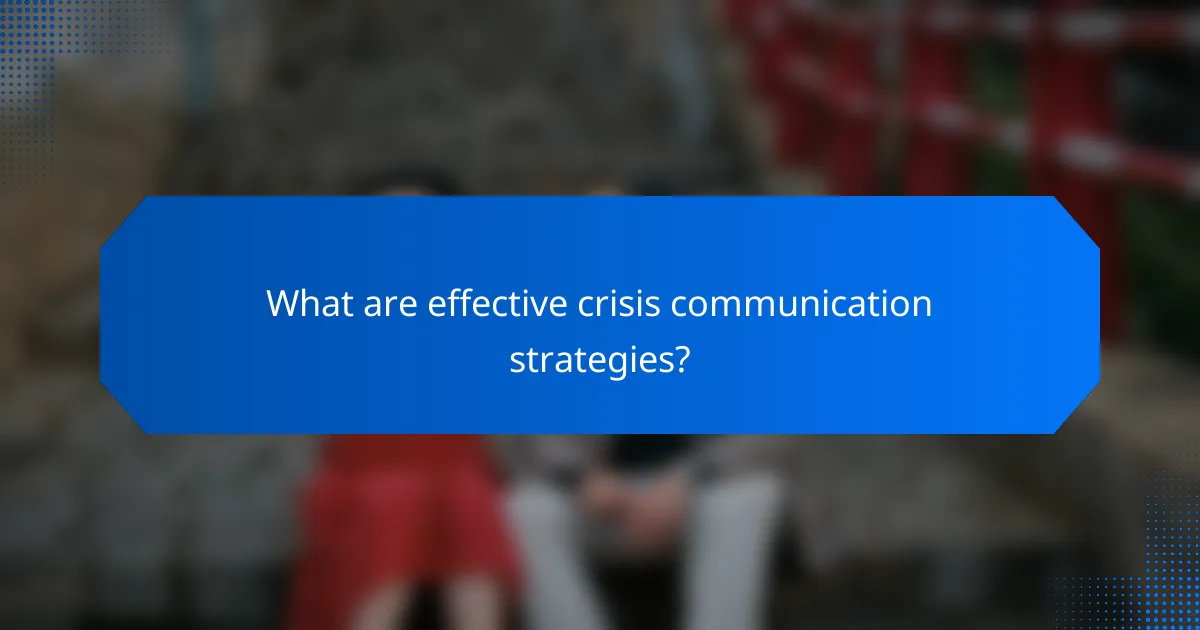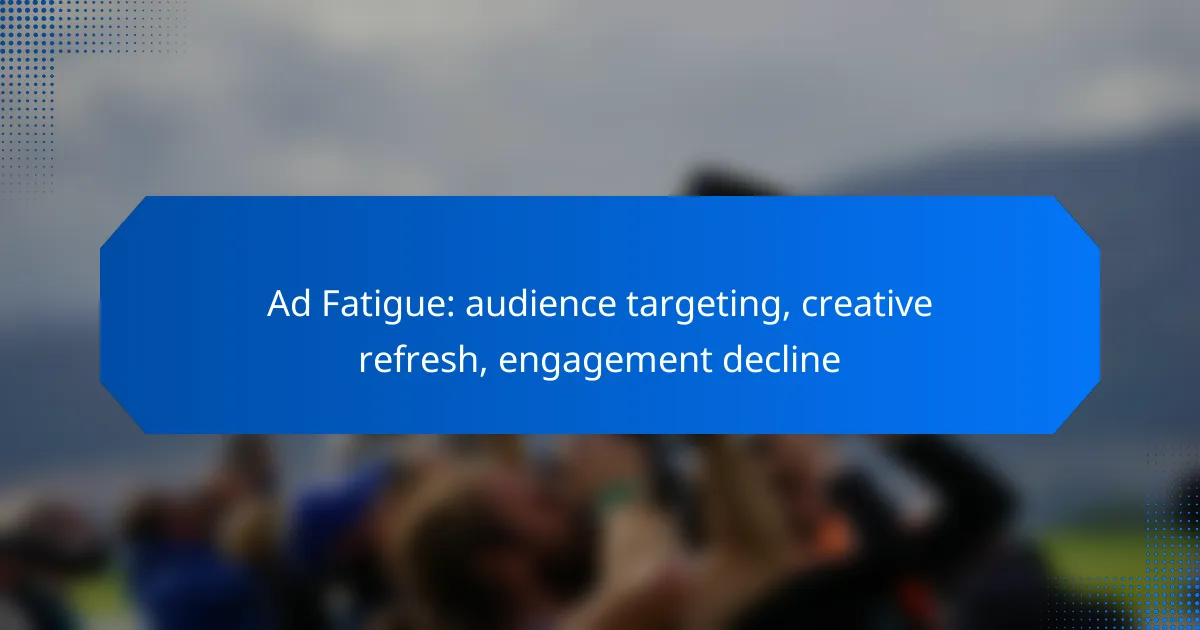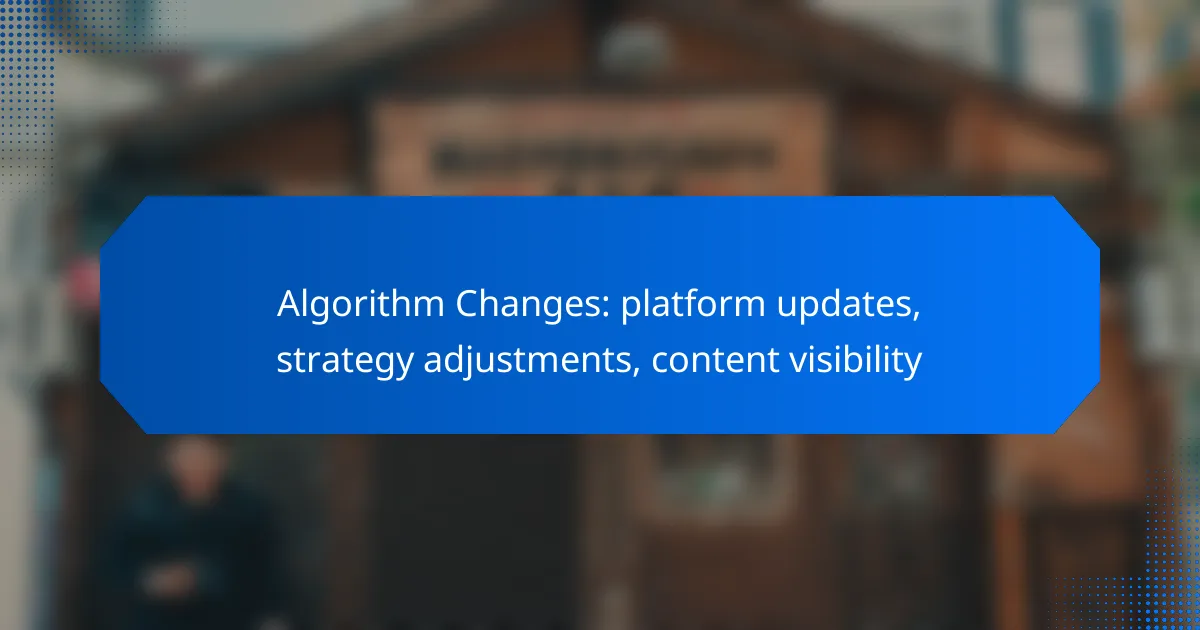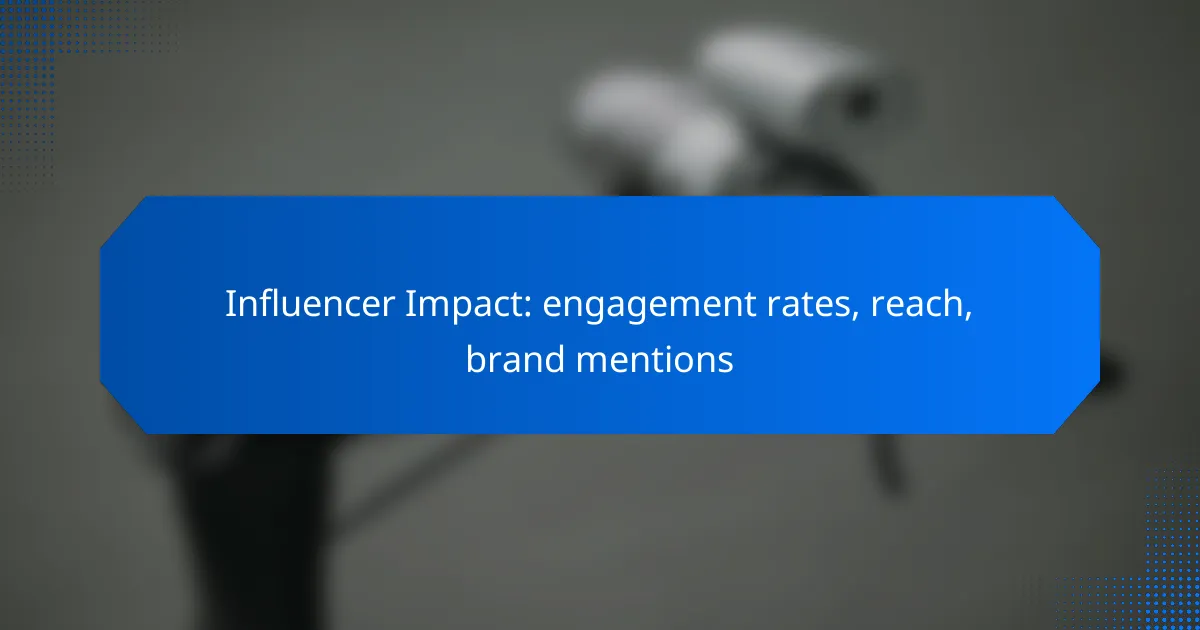
Brand reputation management is crucial for businesses in Australia, requiring proactive communication and effective crisis management to uphold a positive public perception. By implementing transparent messaging and timely updates during crises, companies can maintain trust with their stakeholders. Additionally, actively gathering and managing customer feedback is essential for enhancing products and services, ultimately leading to improved customer satisfaction.

How to manage brand reputation in Australia?
Managing brand reputation in Australia involves proactive communication, effective crisis management, and continuous feedback monitoring. Companies must engage with their audience and address issues swiftly to maintain a positive public perception.
Proactive communication strategies
Proactive communication strategies are essential for building and maintaining a strong brand reputation. This includes regularly sharing updates about products, services, and corporate social responsibility initiatives. Engaging storytelling can also enhance brand image and foster customer loyalty.
Consider utilizing newsletters, press releases, and community events to keep your audience informed. Tailoring messages to resonate with Australian cultural values, such as mateship and fairness, can further strengthen connections with your audience.
Crisis management plans
A well-defined crisis management plan is crucial for mitigating damage to brand reputation during adverse events. This plan should outline clear protocols for communication, designate spokespersons, and establish timelines for responses. Regularly reviewing and updating the plan ensures it remains effective.
In Australia, it is important to comply with local regulations and industry standards when addressing crises. For instance, transparency and honesty are vital, as Australian consumers value authenticity. Conducting simulations can help prepare your team for real-life scenarios.
Social media monitoring tools
Social media monitoring tools are vital for tracking public perception and gathering feedback in real time. These tools can help identify trends, sentiment, and potential issues before they escalate. Popular options include Hootsuite, Sprout Social, and Brandwatch, which offer various features tailored to brand reputation management.
Regularly analyzing social media data allows brands to adjust their strategies and respond promptly to customer concerns. Setting up alerts for brand mentions can help you stay informed and engage with your audience effectively, ensuring that you maintain a positive reputation in the competitive Australian market.

What are effective crisis communication strategies?
Effective crisis communication strategies focus on maintaining trust and clarity during challenging situations. Key components include transparent messaging and timely updates to ensure stakeholders are informed and engaged.
Transparent messaging
Transparent messaging involves openly sharing information about the crisis, including its causes and potential impacts. This approach helps build credibility and reassures the public that the organization is taking the situation seriously.
When crafting transparent messages, use clear language and avoid jargon. For example, if a product recall occurs, explain the reasons for the recall, the steps being taken to address it, and how customers can return the product. This clarity can mitigate confusion and foster trust.
Timely updates
Timely updates are crucial during a crisis, as they keep stakeholders informed about developments and actions being taken. Regular communication can prevent misinformation and speculation, which can worsen the situation.
Establish a schedule for updates, such as every few hours or daily, depending on the crisis’s severity. Use multiple channels, including social media, email, and press releases, to reach a broader audience. For instance, during a data breach, provide updates on the investigation’s progress and any protective measures being implemented.

How to gather and manage customer feedback?
Gathering and managing customer feedback involves using various tools and strategies to collect insights from your audience. Effective feedback management helps improve products, services, and overall customer satisfaction.
Online surveys
Online surveys are a direct way to gather customer feedback. They can be distributed via email, social media, or embedded on your website, allowing you to reach a broad audience efficiently.
When designing surveys, keep questions clear and concise. Aim for a mix of multiple-choice and open-ended questions to gather both quantitative and qualitative data. Consider using platforms like SurveyMonkey or Google Forms for ease of use.
Social media engagement
Social media engagement is crucial for real-time feedback from customers. Actively monitor your brand’s social media channels to respond to comments, questions, and reviews, which can provide valuable insights into public perception.
Encourage customers to share their thoughts by posting polls or asking for opinions on new products. This not only fosters community but also helps you gauge customer sentiment and preferences quickly.
Review management platforms
Review management platforms help businesses track and respond to customer reviews across various sites like Google, Yelp, and TripAdvisor. These platforms aggregate feedback, making it easier to analyze trends and address concerns.
Utilize these tools to respond promptly to reviews, both positive and negative. Acknowledging customer feedback publicly can enhance your brand’s reputation and demonstrate commitment to customer satisfaction.

What role does public perception play in brand reputation?
Public perception significantly influences brand reputation by shaping how consumers view and interact with a brand. Positive public perception can enhance trust and loyalty, while negative perceptions can lead to distrust and disengagement.
Impact on customer loyalty
Customer loyalty is closely tied to public perception; when a brand is viewed favorably, customers are more likely to remain loyal. Brands that actively manage their reputation through transparent communication and responsiveness to feedback can foster stronger relationships with their audience.
For example, a company that addresses customer complaints promptly and effectively can turn a negative experience into a positive one, reinforcing loyalty. Conversely, brands that ignore public sentiment may see a decline in repeat business.
Influence on sales
Public perception directly impacts sales, as consumers often make purchasing decisions based on how they perceive a brand. A positive reputation can lead to increased sales, while negative perceptions can deter potential customers.
Research indicates that brands with strong reputations can command higher prices and enjoy better sales performance. For instance, a brand known for quality and ethical practices may attract more customers willing to pay a premium compared to competitors with poor reputations.

What are the best practices for responding to negative feedback?
Effective responses to negative feedback can significantly enhance a brand’s reputation. Key practices include personalizing responses and offering practical solutions to address the concerns raised.
Personalized responses
Personalized responses demonstrate that you value the feedback and the individual behind it. Use the customer’s name and reference specific details from their feedback to show genuine engagement. For instance, instead of a generic reply, say, “Hi John, I understand your frustration with the delayed shipment of your order.” This approach fosters a connection and can help mitigate negative feelings.
Additionally, avoid using canned responses. Tailoring your message not only shows empathy but also encourages further dialogue. A personalized touch can transform a dissatisfied customer into a loyal advocate.
Offering solutions
Offering solutions is crucial in addressing negative feedback effectively. After acknowledging the issue, provide clear steps you will take to resolve it. For example, if a customer complains about a defective product, outline the return process and any compensation options available, such as a refund or replacement.
Moreover, ensure that your solutions are realistic and achievable. If immediate resolution isn’t possible, communicate the timeline for when the customer can expect updates. This transparency builds trust and demonstrates your commitment to customer satisfaction.

How to measure brand reputation effectively?
Measuring brand reputation involves assessing public perception through various metrics and tools. Effective measurement combines qualitative insights and quantitative data to provide a comprehensive view of how a brand is perceived by its audience.
Brand sentiment analysis
Brand sentiment analysis evaluates the emotions and opinions expressed about a brand across various platforms, including social media, reviews, and forums. This analysis typically involves natural language processing (NLP) techniques to categorize sentiments as positive, negative, or neutral.
To conduct sentiment analysis, brands can use tools like social listening software that aggregates mentions and analyzes the context. A common approach is to track sentiment over time, allowing brands to identify trends and respond to shifts in public opinion effectively.
For practical application, brands should regularly monitor sentiment scores and correlate them with specific events, such as product launches or crises, to understand their impact on reputation. Aim for a sentiment score above 70% positive for a healthy brand image.
Net Promoter Score (NPS)
The Net Promoter Score (NPS) measures customer loyalty and satisfaction by asking customers how likely they are to recommend a brand to others. Responses are typically rated on a scale from 0 to 10, allowing brands to categorize respondents into promoters, passives, and detractors.
To calculate NPS, subtract the percentage of detractors from the percentage of promoters. A score above 50 is generally considered excellent, while scores below 0 indicate significant issues with customer satisfaction. Regularly conducting NPS surveys can help brands track changes in customer loyalty over time.
When implementing NPS, ensure to follow up with open-ended questions to gather qualitative feedback. This can provide deeper insights into customer experiences and highlight areas for improvement, ultimately enhancing brand reputation.

What tools can assist in brand reputation management?
Several tools can effectively assist in brand reputation management by monitoring public perception, managing feedback, and facilitating crisis communication. Utilizing these tools can help brands respond promptly to issues and maintain a positive image.
Brandwatch
Brandwatch is a powerful social media monitoring tool that helps brands track conversations about their products and services across various platforms. It uses advanced analytics to provide insights into customer sentiment, allowing companies to identify potential crises before they escalate.
Key features include customizable dashboards, trend analysis, and competitor benchmarking. Brands can set alerts for specific keywords or phrases, enabling them to respond quickly to negative feedback or emerging issues.
Hootsuite
Hootsuite is a comprehensive social media management platform that allows brands to schedule posts, monitor engagement, and analyze performance across multiple channels. It provides tools for tracking brand mentions, which is crucial for reputation management.
With Hootsuite, brands can engage directly with customers, addressing concerns in real-time. This proactive approach helps mitigate negative perceptions and fosters a positive brand image. Additionally, Hootsuite’s reporting features can help assess the effectiveness of reputation management strategies over time.


